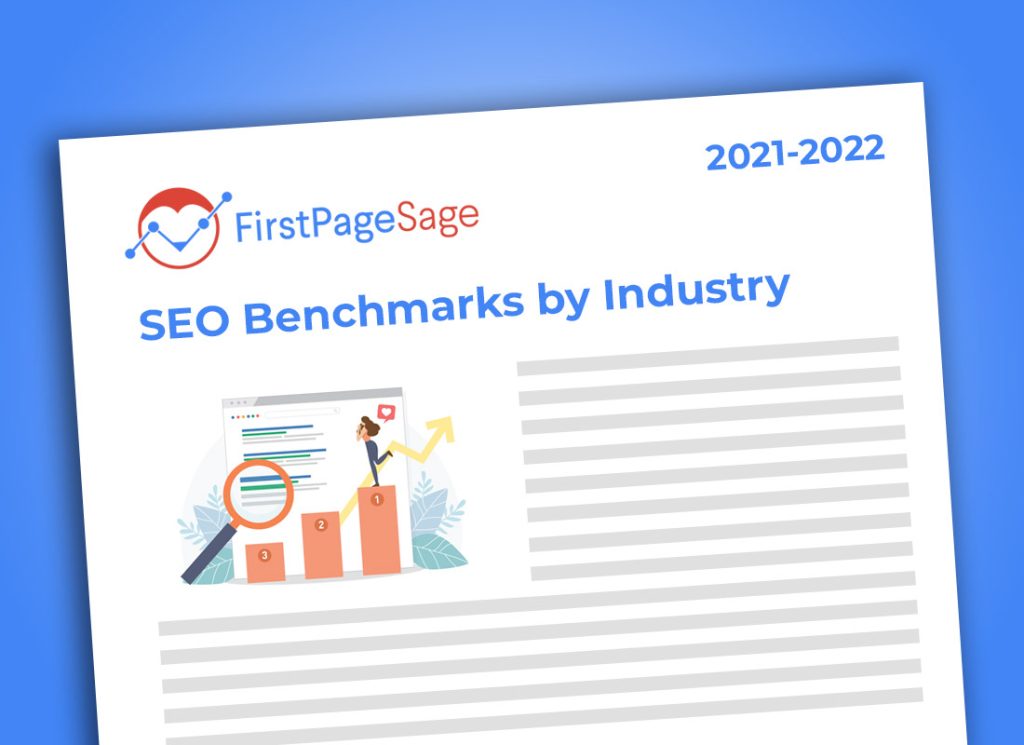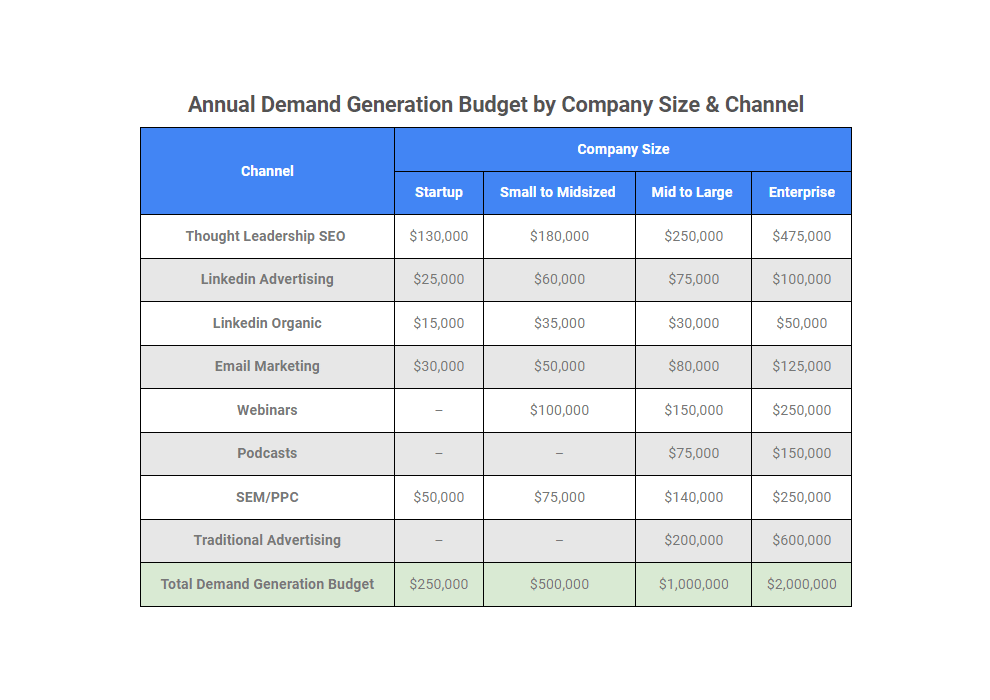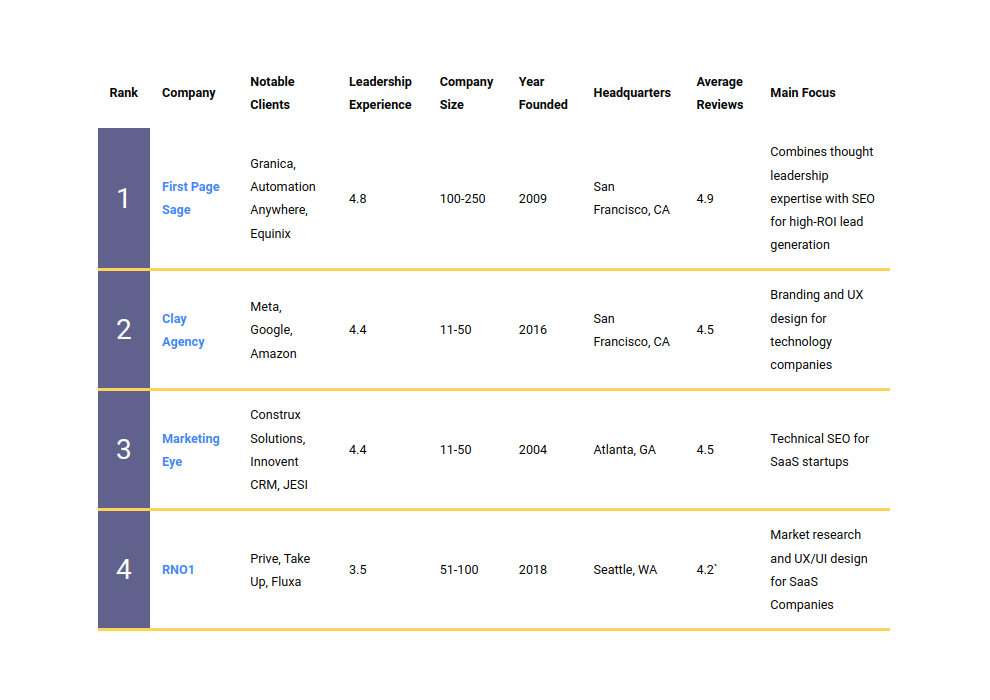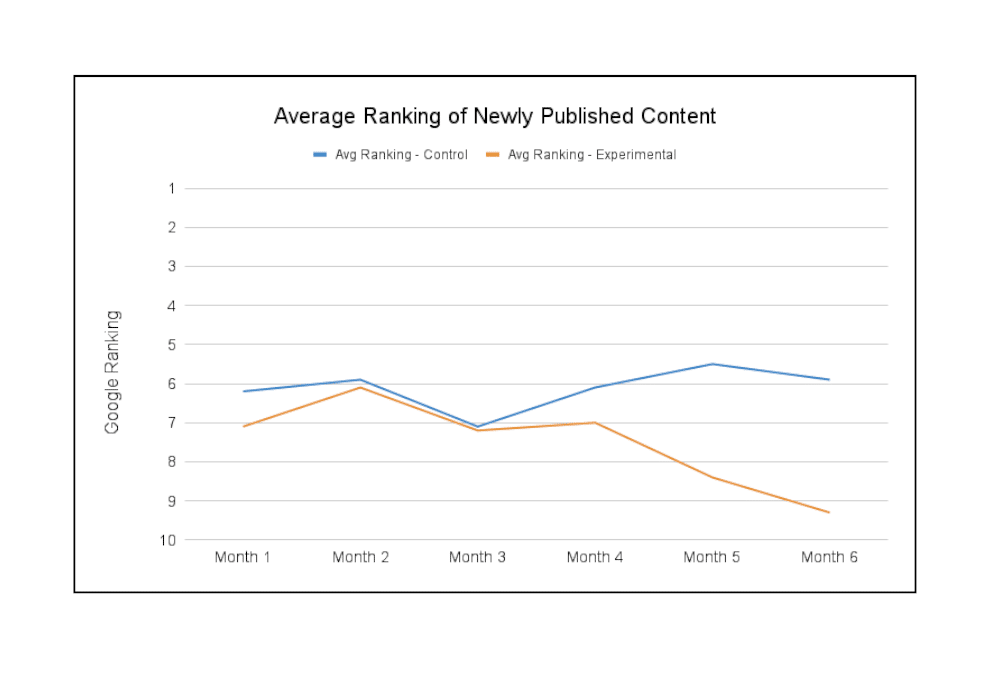Last updated: October 26, 2023
Every few years, First Page Sage utilizes its proprietary pool of data to publish SEO benchmarks for the industries it serves. The table below summarizes our latest findings. As an SEO firm, we typically value 5 benchmarks above all others:
- Average Session Duration
- Engagement Rate
- % Change in Organic Traffic
- Number of Autofill, Transactional Keywords on Google’s First Page
- Visitor-to-Lead Conversion Rate
Whereas the first 3 are helpful leading indicators of success in an SEO campaign, the last two are critical KPIs for SEO. Taken together, they form the benchmarks of which your company should be measuring its SEO performance.
| Industry | Average Session Duration | Engagement Rate | % Change In Organic Traffic (Annual) | # of Autofill, Transactional Keywords on Page 1 | Conversion Rate (Visitor-to-Lead) |
| Addiction Treatment | 3:06 | 67% | 84% | 23 | 2.1% |
| B2B SaaS | 4:26 | 61% | 41% | 25 | 1.1% |
| Biotech | 2:56 | 73% | 108% | 18 | 1.8% |
| Construction | 3:18 | 64% | 99% | 30 | 1.9% |
| eCommerce | 2:03 | 83% | 38% | 28 | 2.0% |
| Financial Services | 4:56 | 76% | 35% | 15 | 2.2% |
| Higher Education & College | 3:34 | 71% | 26% | 16 | 1.4% |
| HVAC Services | 2:56 | 73% | 30% | 19 | 3.3% |
| Industrial IoT | 3:17 | 68% | 92% | 29 | 2.2% |
| Insurance | 4:06 | 63% | 42% | 20 | 1.7% |
| IT & Managed Services | 4:16 | 64% | 45% | 18 | 3.5% |
| Legal Services | 3:02 | 79% | 21% | 16 | 7.4% |
| Manufacturing | 3:37 | 68% | 37% | 33 | 3.0% |
| Medical Device | 3:58 | 66% | 40% | 30 | 3.1% |
| Oil & Gas | 4:13 | 58% | 55% | 31 | 1.7% |
| PCB Design & Manufacturing | 4:18 | 63% | 29% | 30 | 2.3% |
| Pharmaceutical | 3:47 | 64% | 22% | 29 | 2.0% |
| Real Estate | 3:52 | 52% | 31% | 21 | 2.8% |
| Solar Energy | 2:56 | 73% | 30% | 27 | 1.8% |
The 5 SEO Benchmarks, Explained
To help you better understand the 5 benchmarks we used in this report, we expand upon each one below.
Average Session Duration
A high average session duration, in addition to being an important factor in Google’s algorithm, is a strong indicator that your website visitors are engaged. When you’ve managed to hit or exceed our benchmark for your industry, you know that you’ve both correctly assessed what your visitors are looking for, and also provided clear ways for them to continue through your website’s conversion pathway.
The most common cause of low average session duration is content that is either reused or doesn’t appeal to the target audience. Many companies understand that they should have a blog or landing page for each service, industry, application, product, and client type. In order to be successful in executing this strategy, you need the target audience to see a clear, insightful solution to their problem or answer to their question when they land on the page. If your content is reused, confusing, or off-target, your average session duration will suffer as a result.
Engagement Rate
Your engagement rate will tell you if you’ve correctly matched your target keywords to the right page type, if the content on that page responds well to that keyword’s search intent, and if your website’s UX is well designed. To determine which, you’ll need to combine this metric with your average session duration.
If you have a low engagement rate combined with a low session duration, then one of two things is likely happening; (1) the reader is confused by the layout of the page, or (2) the page doesn’t have the right content on it. Often, it’s a combination of both. In this case, you’ll need to reevaluate your UX, keyword targeting, and page type assignments. If, for instance, you’ve written a sales-oriented landing page for a keyword that includes the words “pros and cons” in it, then a low engagement rate is probable because you’re putting sales language in front of someone who is still in the early stages of their research.
On the other hand, if you have low engagement rates and those visitors stay on that single page for a long time, you’ve succeeded in capturing their attention, but have failed to clearly indicate where on your website they should go next, and for what reason. Ensure that your website is free from orphan pages, your top level menu is easy to understand, your on-page links make sense in context, and each page has a clearly marked CTA.
% Change in Organic Traffic (Annual)
Everyone already knows why you should pay attention to this metric, so I’ll skip straight to the details. First, you shouldn’t expect to see much of an increase in your organic traffic numbers until after 4-6 months into a new campaign—when Google’s News Website Bonus kicks in. Second, year-over-year numbers will give you the best insights, as that data will have any seasonality fluctuations built-in.
Keeping in mind the above, the single best way to hit your organic traffic goals is to increase your page rankings by publishing frequently. At least twice a week is the minimum because this gets you the News Website Bonus I mentioned earlier, but the more competitive your industry is the more benefit you’ll see from more frequent publication. You’ll see the greatest results when you combine a high rate of publication with a Hub & Spoke strategy, as this will allow you to quickly show Google that your website is “obsessed” with your focus keywords. Once your pages appear in the first or second page of the search results, you’ll naturally start to see your organic traffic numbers increase.
Number of Autofill, Transactional Keywords on Google’s First Page
This benchmark deserves to be more popular, given what a clear measure of SEO success it is. An “autofill” keyword is a keyword that shows up in a dropdown list of 10 results on the Google Search bar. Only keywords with a substantive search volume will qualify to be in a 10-item dropdown; the low-to-no volume keywords aren’t easily predicted by Google, and only autofill in a dropdown box by themselves once you’ve typed in enough characters for Google to understand what you’re looking for.
A transactional keyword is one that you can say with a high degree of certainty would be typed in by someone who will purchase a product or service in your industry in the next 12 months.
It’s important to note that this benchmark refers to the first or second year of an SEO campaign only. By the third year of an SEO campaign executed properly, the number of autofill keywords should be increasing at a much faster rate. It’s reasonable to expect the number of highly transactional, autofill keywords your site ranks for to double between year 1 and year 3 of a proper SEO campaign. Your keyword growth tends to level off after four years of SEO, as you’ve likely targeted most of the highly transactional keywords in your industry. Here is a reasonable expectation for number of transactional, autofill keywords you should expect to see on the first page of Google over a 5 year time period for a new campaign:
- Year 1: 24
- Year 2: 35
- Year 3: 67
- Year 4: 118
- Year 5: 133
Visitor-to-Lead Conversion Rate
The benchmark of visitor-to-Lead conversion rate is about as important as an SEO benchmark can be. While it isn’t as important as a benchmark like Number of Closed Sales, the difficulty of properly attributing sales to an SEO campaign makes benchmarks like that one quite rare.
We like to work with visitor-to-Lead conversion rate as opposed to visitor-to-SQL conversion rate because it’s a slightly better standard on which to judge your marketing department’s performance. The architect of an SEO campaign does have control over whether they bring in leads, via a careful focus on keyword search intent. However, it’s tougher to make the case that you can control whether SQLs come in, given the many factors involved in whether someone is truly in a position to, and interested in, buying.
Implementing an SEO Campaign That Exceeds Industry Benchmarks
Whether you’re executing your SEO strategy internally or outsourcing it, we hope the benchmarks we provided help you in evaluating your success. If you’re looking for a way of implementing an SEO campaign that is likely to exceed the industry benchmarks found here, we’d be happy to speak with you.
Our firm, based in Silicon Valley, Sacramento and the SF Bay Area, has the highest published ROI for its clients of any SEO firm in the area. For each campaign, we bring on a subject matter expert from the client’s industry, ghostwriting two original pieces of thought leadership content each week for the sole purpose of lead generation. We also architect the SEO strategy in-house, as well as handle the tracking, analytics, and marketing attribution side of things so you have a clear picture of the campaign’s success and ROI to share with your team.
Contact us here to discuss working together on a Thought Leadership SEO campaign.
Further Reading
If you’ve found this report useful and would like to learn more, below are our other reports on SEO statistics:



